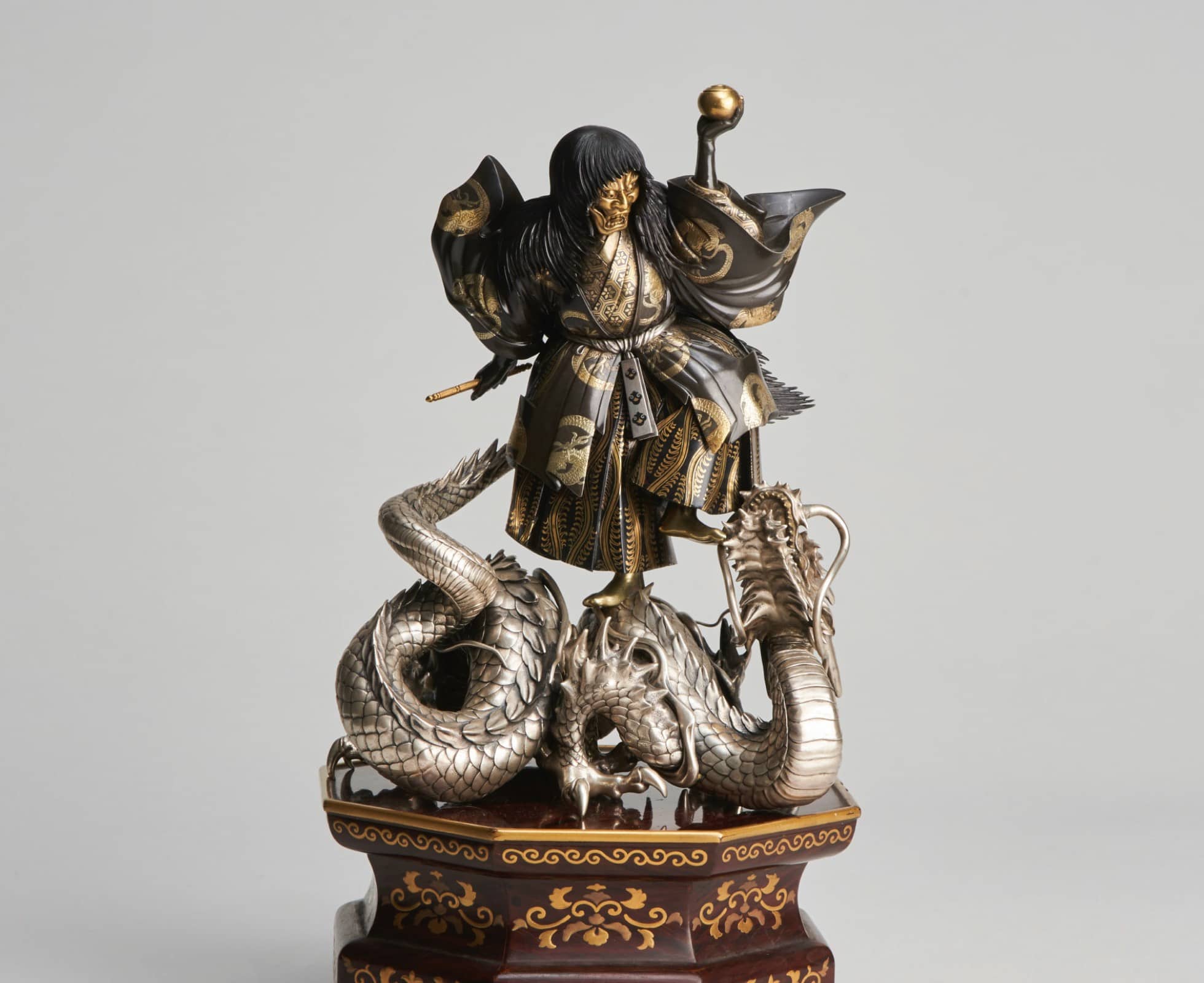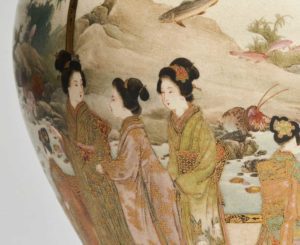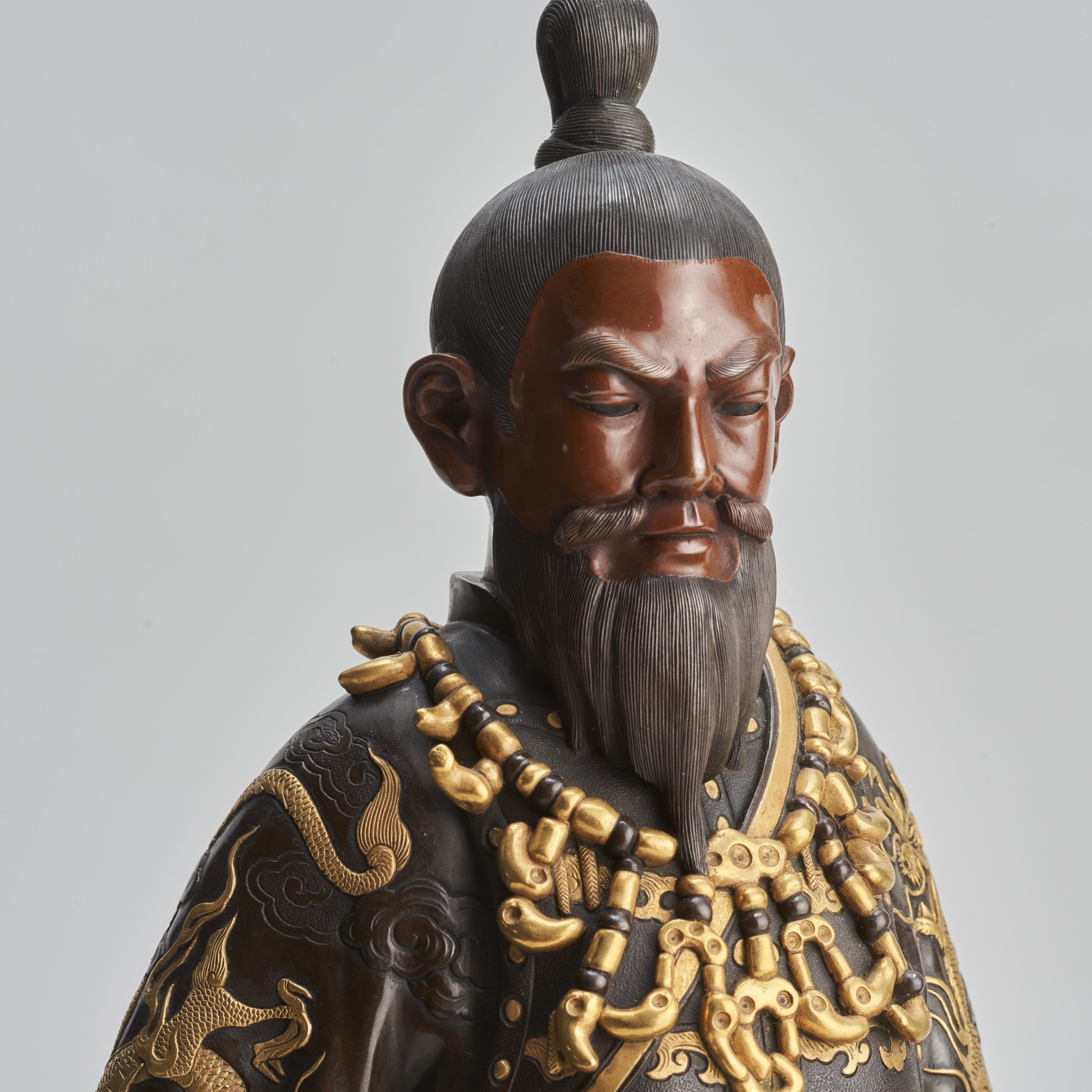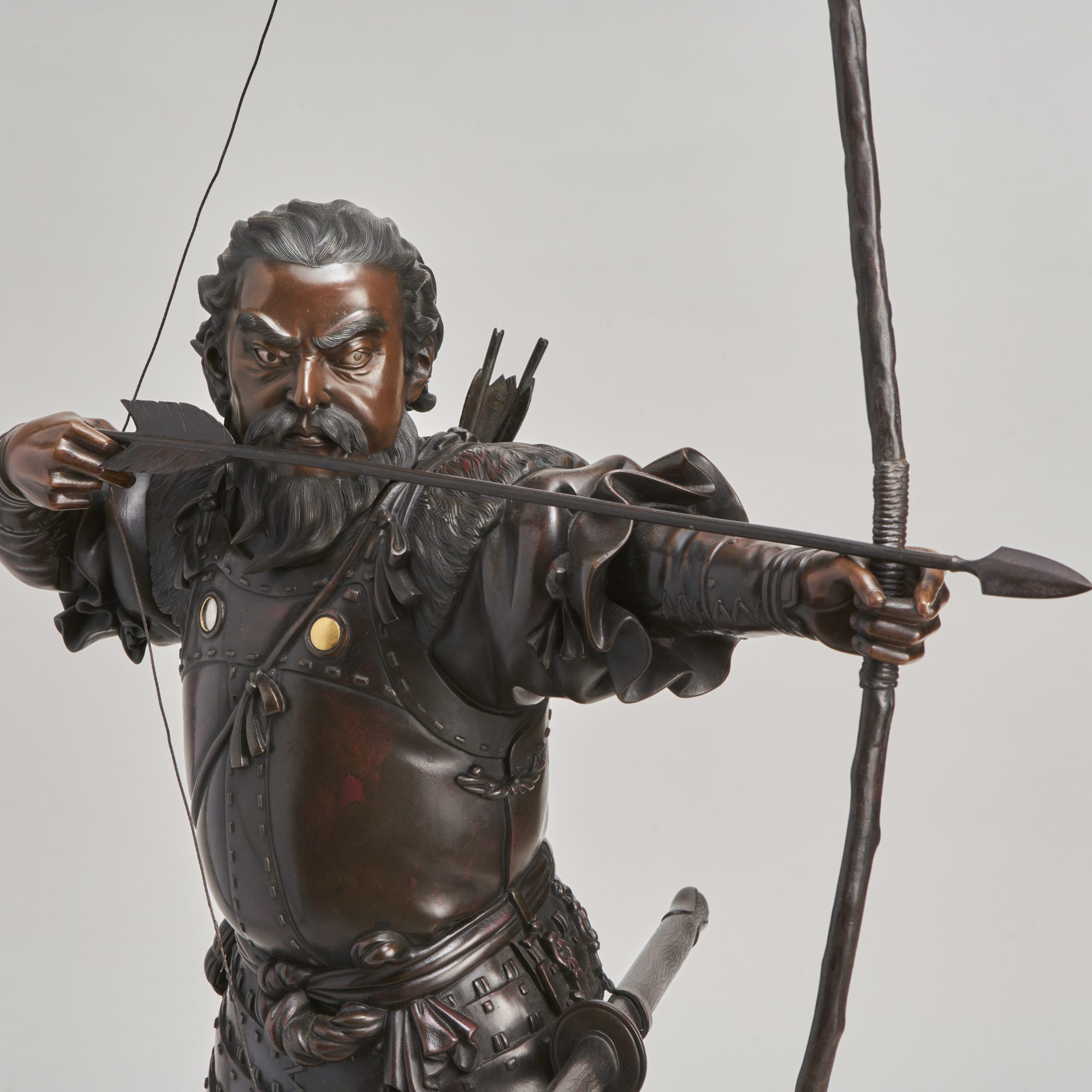In the latest in our series “The legends behind the art”, we shine a light on the illustrious first leader of Japan, Emperor Jimmu.
A hugely popular and well-respected figure in Japanese culture, Emperor Jimmu is believed to have come to power in 660BC and to this day, his ascension is marked on the 11th February each year as National Foundation Day.
It is believed that he was a direct descendent of the Sun Goddess, Amaterasu. Her Grandson Ninigi-no-Mikoto was sent to live on the Japanese Islands. He went on to father three sons with Princess Konohana-Sakuya and their son, (Hikonagisa Takeugaya Fukiaezu no Mikoto) was abandoned at birth before going on to marry Princess Tamayori, (his Aunt). They themselves had four sons, and it was the youngest who would be Emperor Jimmu.
The Sun Goddess Amaterasu as depicted on a Satsuma vase by Kinkozan. Click here for more information.
One day, Amaterasu appeared to the young Jimmu in a vision and commanded that he ruled the lands of Japan. She presented him with three sacred emblems of the Imperial Regalia, a Mirror, a Sword and a Jewel. Jimmu is often depicted wearing the jewel as a large, distinctive necklace of Magatama beads and to this day, the Imperial Regalia are still important emblems of the current Emperor.
Emperor Jimmu wearing the Magatama beads as a necklace in a stunning Okimono group by the Miyao Company. Click here to see more.
Emperor Jimmu is almost certainly a fictional, mythical figure, with some aspects of his life based on actual events such as the conquest of Osaka and Nara. The Nihol Scoki and Kojii chronicles record an expedition eastwards from Hyuga along the inland seas of Japan with Jimmu subduing tribes along the way as he travelled East. The journey ended in Yamato where he established the centre of his Empire.
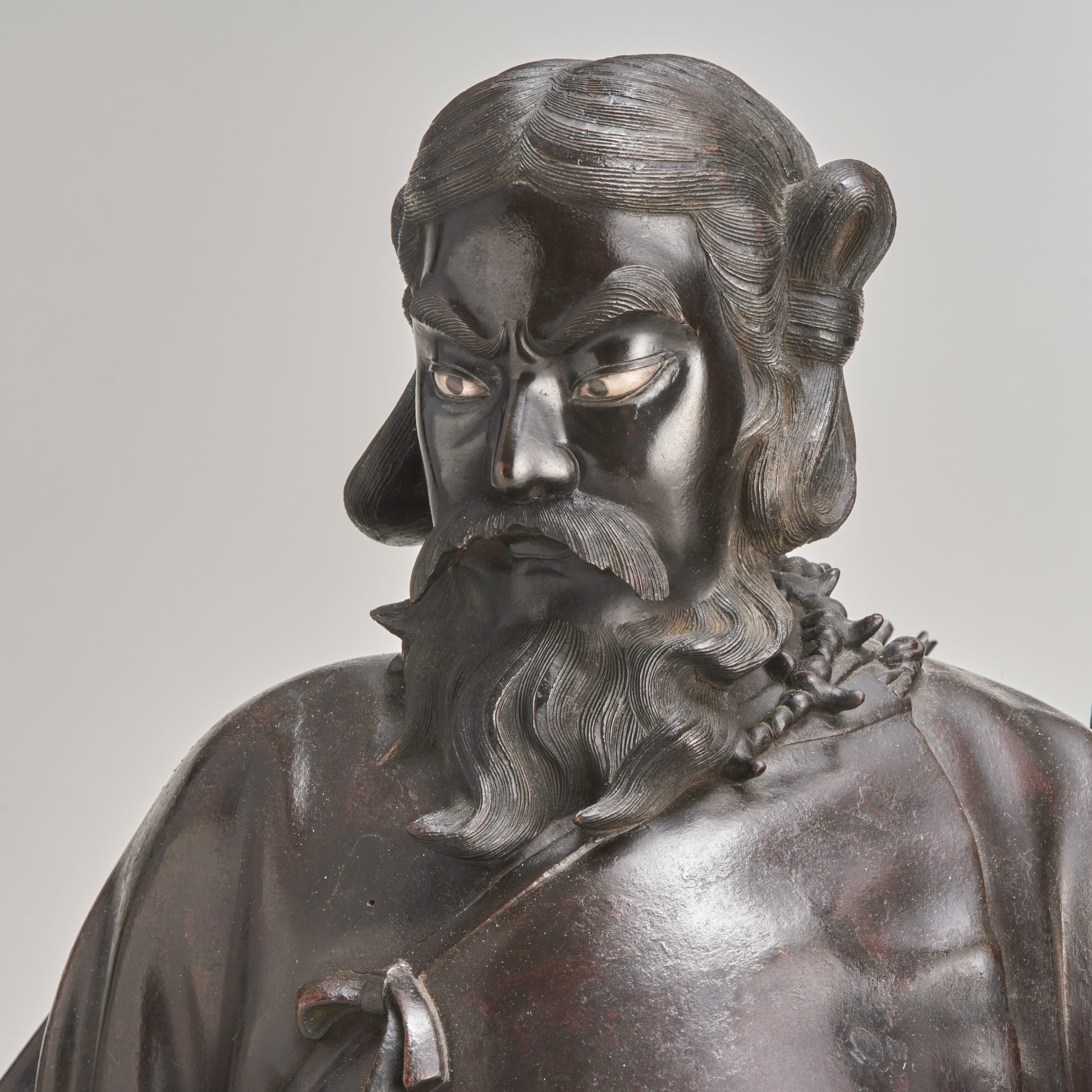
A battle-hardened Emperor Jimmu, with Silver inlaid eyes as depicted in this stunning large Bronze Okimono. Click here for more information
During the 1930s and 1940s it was actually dangerous to publicly question the existence of Emperor Jimmu as The Imperial House of Japan based their claim to the throne on being his direct descendants.
He is frequently depicted in Japanese art dressed as a General or carrying a Longbow and he is identified by his long beard, proud nose and benevolent expression.
A Masterful Bronze Okimono depicting Emperor Jimmu taking aim with his longbow. This piece sold recently but you can see more wonderful images here.
Whether he is a fictional mythical figure or a real live, legendary leader, Emperor Jimmu has an important place in Japanese history, culture and tradition. The belief that there is a special bond between Land, Ruler and People remains and it is these values that form a key part of Japan’s unique identity.
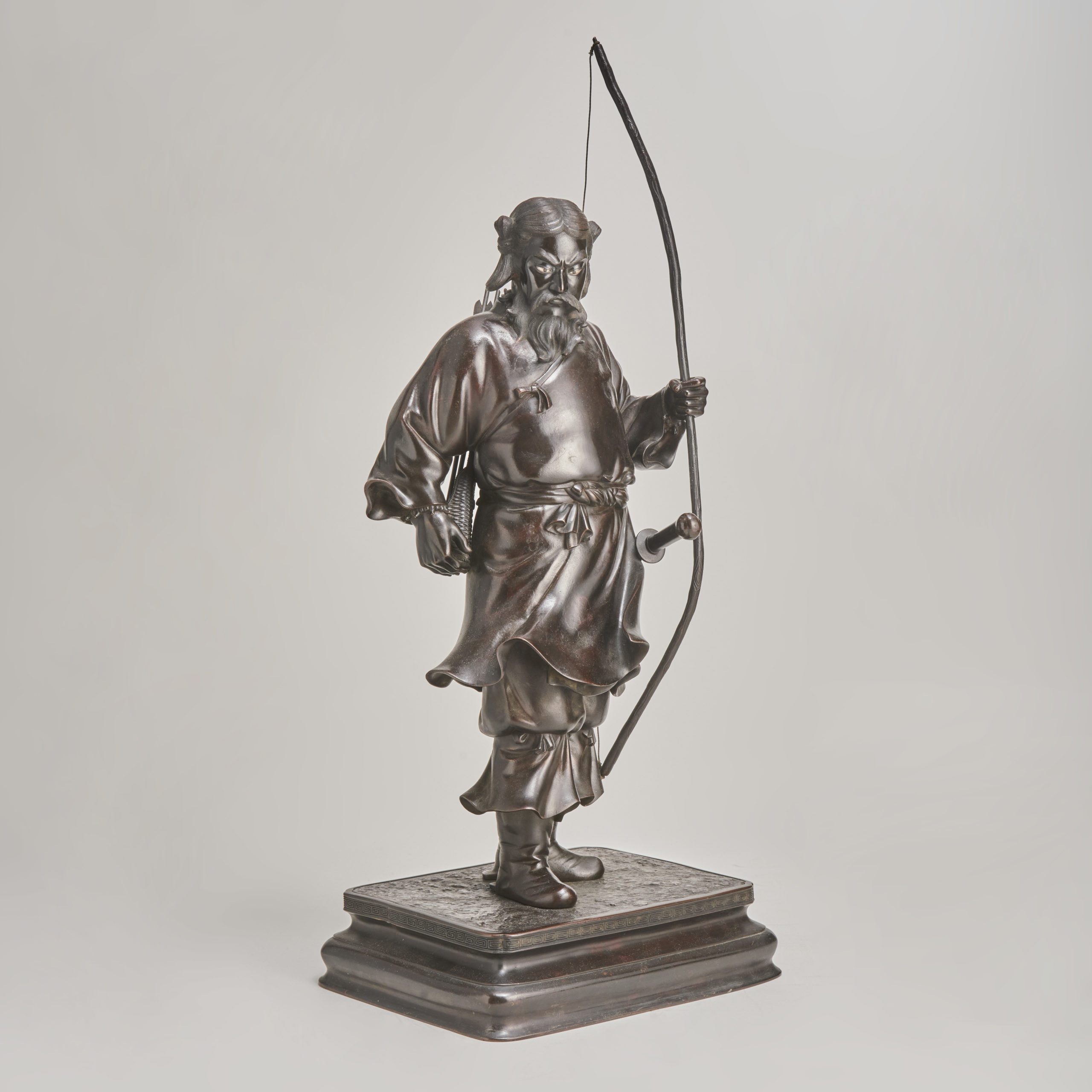
Another image of this wonderful large Bronze Okimono of Emperor Jimmu.
We hope you enjoyed this short-read. You can see more Stories behind the art by clicking here. And you can sign-up to receive our quarterly Newsletter by entering your email address at the bottom of our Home page.

